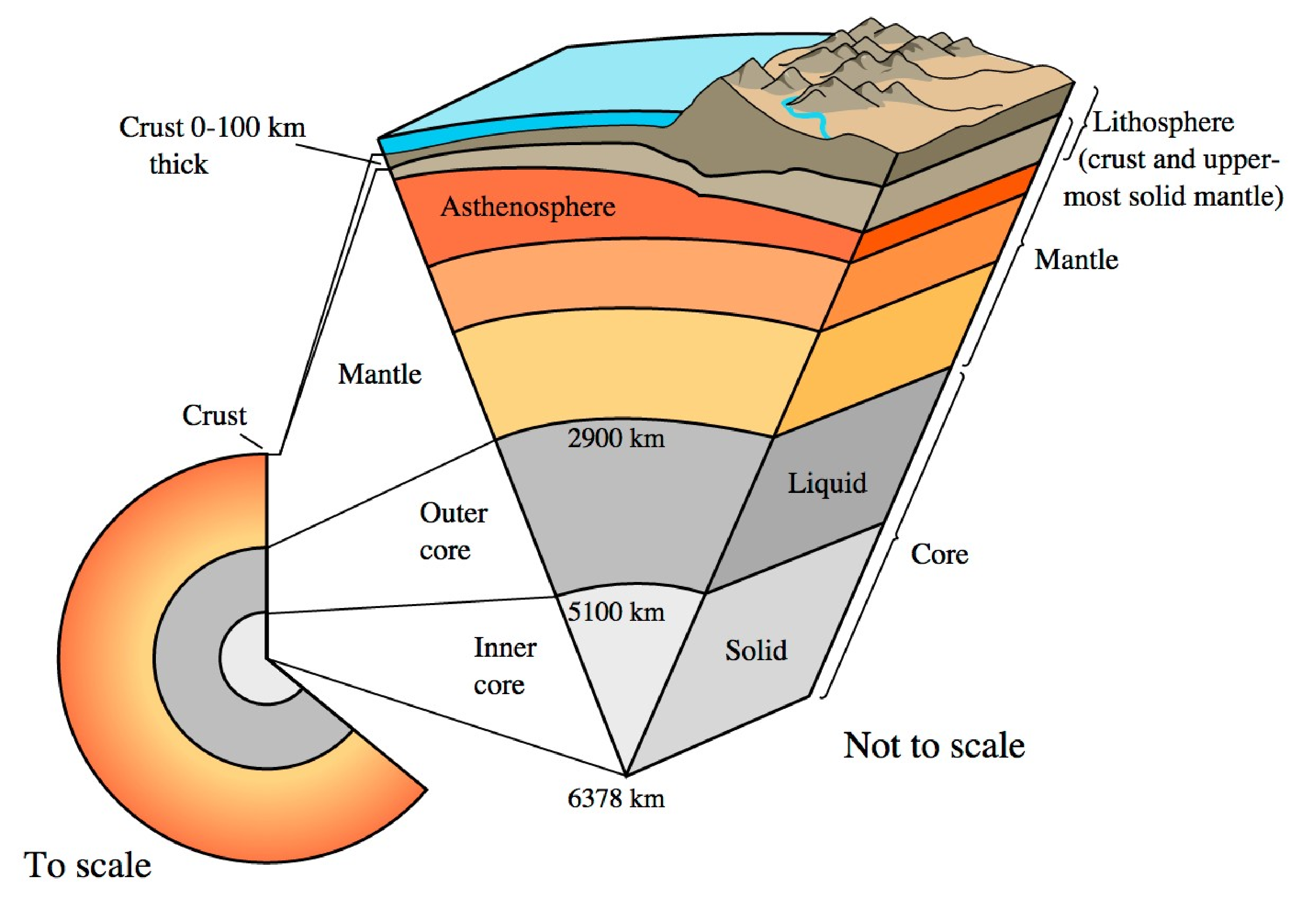Section 11.1 Structure of the Earth

1
www.usgs.gov/media/images/cutaway-views-showing-internal-structure-earth-leftEarth is composed of several layers Figure 11.1.1. The layers are differentiated based on their composition, temperature, pressure, and density. Starting from the outermost layer, they are:
- Crust: The Earth’s crust is the outermost layer, and it is the thinnest layer of the planet, with an average thickness of around 30 kilometers (18.6 miles). It is composed of rocks, minerals, and sediment and is divided into two types: continental crust and oceanic crust. The continental crust is thicker and less dense than the oceanic crust. The oceanic crust is thinner and denser than the continental crust.
- Mantle: The mantle is the layer beneath the crust and is the thickest layer of the Earth, extending to a depth of around 2,900 kilometers (1,800 miles). It is composed of solid, but flowing, rock material that is believed to be in a state of constant motion due to convection currents caused by heat from the Earth’s core. The mantle plays a critical role in the Earth’s geologic processes, including the movement of tectonic plates, volcanic activity, and the creation of new oceanic crust.
- Outer core: The outer core is a liquid layer that is located beneath the mantle and is composed mainly of molten iron and nickel. It has a thickness of around 2,250 kilometers (1,400 miles) and is responsible for generating the Earth’s magnetic field.
- Inner core: The inner core is the innermost layer of the Earth, located at the center of the planet. It is a solid ball of iron and nickel, with a radius of around 1,220 kilometers (760 miles). The inner core is under immense pressure, and the temperature can reach up to 5,500 °C (9,932 °F).
These layers are constantly interacting with each other and are responsible for shaping the Earth’s surface and its physical properties. The temperature of earth’s layers increases with depth. There are two other layers we can consider in crust. They are lithosphere and asthenosphere. The lithosphere is the outermost solid layer of the Earth, which includes the crust (the Earth’s outermost layer) and the rigid upper part of the mantle. It is composed of a variety of rock types, including basalt, granite, and sedimentary rocks. The thickness of the lithosphere varies from around 100 km beneath the oceans to up to 250 km beneath the continents. The lithosphere is divided into a number of plates, which move around on the underlying asthenosphere. Tectonic activity, including earthquakes and volcanic eruptions, mainly occurs at the boundaries between these plates. The lithosphere is also involved in other processes such as erosion, sedimentation, and the cycling of carbon and other elements. The asthenosphere is a partially molten, ductile region of the mantle beneath the lithosphere. It is composed of hot, semi-solid rock that can flow slowly over long periods of time. The asthenosphere plays an important role in tectonic activity, providing the driving force for plate movement through the process of convection.
